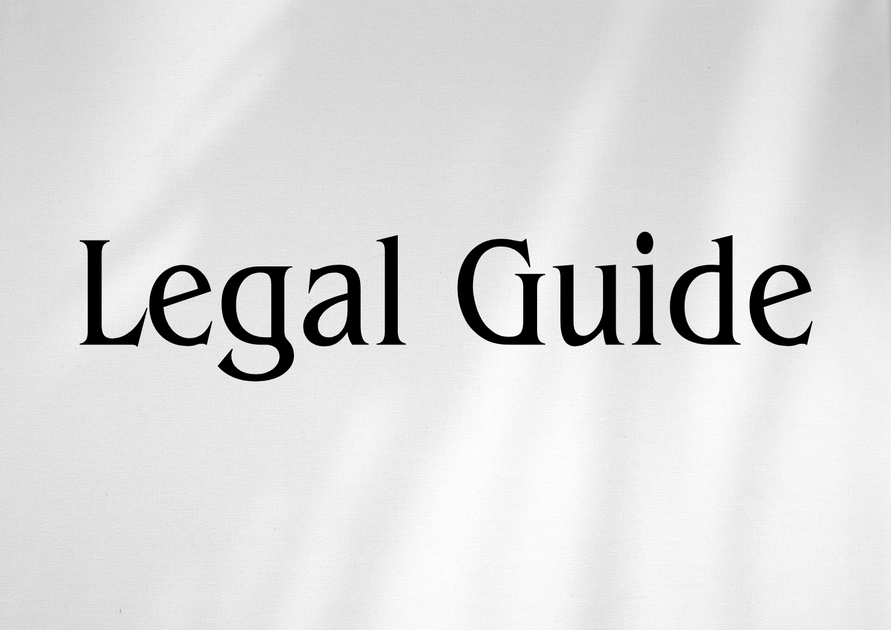Introduction: Navigating the Evolving Landscape of Multi-Tier Dispute Resolution in the UAE
Dispute resolution has always played a pivotal role in commercial relationships, particularly in cross-border transactions and high-value contracts. In the United Arab Emirates (UAE), recent legal reforms and an increasingly sophisticated business environment have brought multi-tier dispute resolution clauses to the forefront of contract negotiations. With the UAE’s sustained momentum as a regional business hub, the selection and structuring of appropriate dispute resolution mechanisms are now of critical importance for corporations, investors, HR managers, and legal practitioners alike.
Multi-tier dispute resolution clauses, commonly referred to as “escalation” or “step” clauses, require parties to progress through distinct phases—such as negotiation, mediation, and arbitration or litigation—before commencing formal proceedings. Such clauses are now routinely included in commercial contracts, construction agreements, and partnership frameworks within the UAE. The enforceability, legal intricacies, and practical implications of these clauses have evolved, particularly in the aftermath of Federal Decree-Law No. 6 of 2018 concerning Arbitration and various updates in 2023 and 2024. Understanding the current legal position, compliance requirements, and strategic considerations around multi-tier dispute resolution is essential for minimizing business risk and maximizing contractual certainty.
This article offers an in-depth examination of multi-tier dispute resolution clauses from a UAE legal perspective, referencing official texts such as Federal Decree-Law No. 6 of 2018, Cabinet Resolution No. 57 of 2018 (as amended), and Ministerial Circulars. With expert analysis, practical consultancy insights, and proprietary recommendations, this briefing aims to empower businesses and professionals with actionable understanding about how to properly structure, enforce, and comply with such clauses under UAE law.
Table of Contents
- Overview of Multi-Tier Dispute Resolution Clauses: Definition and Global Context
- Legal Framework Governing Multi-Tier Clauses in the UAE
- Detailed Analysis: Enforceability under UAE Law
- Comparison of Old and New Legal Regimes
- Drafting & Incorporation Best Practices
- Practical Applications: Case Studies & Hypothetical Scenarios
- Risks of Non-Compliance and Litigation Risks
- Compliance Strategies and Recommendations for Businesses
- Conclusion: Future Trends and Strategic Considerations
Overview of Multi-Tier Dispute Resolution Clauses: Definition and Global Context
Definition and Purpose
Multi-tier dispute resolution clauses require parties to undertake a sequence of dispute resolution steps—typically commencing with negotiation, followed by mediation or conciliation, and culminating in arbitration or litigation, should the prior steps not yield a resolution. The rationale is to foster consensual settlement and minimize adversarial proceedings.
Global Adoption vs. UAE Specifics
Globally, such clauses are institutionalized in sectors where ongoing commercial relationships are critical, such as construction, joint ventures, and energy. In the UAE, their incorporation reflects both international best practice and unique local legal dynamics, including Sharia compliance, the preeminence of arbitration, and recent judicial attitudes favoring party autonomy, provided clauses remain workable and certain.
Legal Framework Governing Multi-Tier Clauses in the UAE
Key Statutes and Regulations
The enforceability and effect of multi-tier dispute resolution clauses in the UAE are shaped by:
- Federal Decree-Law No. 6 of 2018 (UAE Arbitration Law) – Superseding the prior arbitration regime, it modernizes practices and recognizes party autonomy in the selection of dispute resolution mechanisms.
- Civil Procedures Law (Federal Law No. 11 of 1992) as amended by Cabinet Resolution No. 57 of 2018 and subsequent revisions – Outlining court procedures and the recognition/enforcement of contractual provisions regarding dispute resolution.
- Ministerial Circulars and Judicial Interpretations – Providing clarifications on proper drafting, timeline enforceability, and interim judicial support.
Role of Institutional Rules
Major UAE arbitration centers such as DIAC, ADGM, and DIFC-LCIA offer bespoke rules that supplement statutory frameworks, further supporting the inclusion and administration of multi-tier clauses—particularly for international disputes.
Detailed Analysis: Enforceability under UAE Law
Judicial Attitudes: Recent Rulings and Developments
For several years, there was judicial uncertainty regarding whether multi-tier clauses were enforceable or instead constituted “agreements to agree.” UAE courts have recently clarified that, provided clauses are clear and mandatory, they are binding. The Court of Cassation in Dubai and Abu Dhabi have both upheld the obligation to participate in pre-arbitration procedures such as negotiation and mediation, provided these are described with sufficient certainty.
Critical Features Affecting Enforceability
- Mandatory Language: Steps must be set out as compulsory rather than optional.
- Clarity of Procedure: There must be no ambiguity as to timelines, participants, and objective criteria for completion/failure of each phase.
- Definitive Triggers: The clause should specify when a party may progress to the next step, for instance, failure to resolve within 30 days of mediation commencement.
The Dubai Court of Cassation (Case No. 683/2020, & others) emphasized that conditional arbitration agreements, if drafted with precise triggers, are to be respected and non-compliance can render subsequent arbitration or litigation inadmissible until prior steps are satisfied.
Official Source References
- UAE Official Gazette: Federal Decree-Law No. 6 of 2018 (Articles 4, 8, 23-26 regarding arbitration agreements and preliminary procedures).
- Ministry of Justice: Judicial circulars referencing interim measures and enforcement of ADR steps.
Comparison of Old and New Legal Regimes
| Aspect | Prior to 2018 Reform | Current Position (as of 2024) |
|---|---|---|
| Legal Basis | Civil Procedures Law, fragmented court decisions | Codified by Federal Decree-Law No. 6 of 2018, Cabinet Resolutions, and clear precedent |
| Enforceability of Multi-Tier Clauses | Often considered aspirational or “agreement to agree”; inconsistent application | Enforceable if express, mandatory, and certain (per Court of Cassation 2021, 2022 rulings) |
| Role of Arbitration Centers | Limited; ad hoc procedures common | Institutional support and guidance, especially for mediation/conciliation steps |
| Judicial Referral to ADR Stages | Discretionary, rarely enforced | Courts may stay proceedings or dismiss claims for failure to comply with ADR preconditions |
| Practical Impact for Businesses | Higher litigation risk, uncertainty, procedural duplication | Increased predictability; clear process flow reduces potential for premature claims |
Drafting & Incorporation Best Practices
Key Legal Guidelines for Drafting Effective Clauses
- Mandatory and Sequential Steps: Use obligatory language (“shall,” “must endeavor”) and clearly describe each phase.
- Objective Timeframes: Specify maximum periods (“within 30 days”) for each stage to avoid open-ended obligations.
- Identifiable Participants: Name roles or individuals tasked with negotiation or mediation (e.g., “C-Suite officers” or “senior representatives”).
- Defining Conclusion: State what constitutes the successful completion or failure of each step (e.g., “if no settlement is reached, arbitration shall commence”).
- Compatibility with Selected Rules: Ensure the clause aligns with default procedures under DIAC, ADGM, or other institutional frameworks.
- Language and Translation: Given the official judicial language is Arabic, ensure contracts are bilingual or fully translated for enforcement in local courts.
Example Clause (Recommended Structure)
"In the event of a dispute, the parties shall first attempt to resolve the matter amicably through negotiation between senior representatives within 30 days. Failing such resolution, the parties shall refer the dispute to mediation under the DIAC Mediation Rules for a period not exceeding 60 days. Only upon the failure of mediation may the dispute be referred to final and binding arbitration under DIAC Rules."
Practical Applications: Case Studies & Hypothetical Scenarios
Case Study 1: Construction Dispute in Abu Dhabi
A UAE-based construction firm entered into a high-value consortium agreement containing a three-step dispute clause: negotiation, mediation under ADGM Rules, then arbitration. When a delay claim arose, one party attempted to file for arbitration before completing mediation. The arbitral tribunal, reinforced by the Abu Dhabi courts, ruled the claim inadmissible, citing non-fulfillment of the ADR precondition. This case reinforced the binding nature of clearly drafted step clauses.
Case Study 2: Joint Venture Dispute – Navigating Uncertain Clauses
Two GCC-based logistics firms had a clause requiring “good faith discussions” for “a reasonable period,” with no objective standards. Dispute escalated, and the Dubai Court of First Instance determined the clause too vague for enforcement, permitting immediate court proceedings. Here, the lack of clear triggers underscored the need for precision.
Hypothetical Example: Employment Agreement
An international IT company offering senior contracts structured a tiered clause: initial negotiation, then mediation via the Ministry of Human Resources and Emiratisation’s (MOHRE) mediation platform, followed by litigation. A termination dispute was resolved at mediation, avoiding protracted litigation and reputational risk. The clause’s explicit reference to MOHRE rules improved enforceability and practical success.
Risks of Non-Compliance and Litigation Risks
Legal Consequences
The primary risk of failing to adhere to a multi-tier clause is that courts or tribunals may dismiss or stay proceedings until pre-arbitration or pre-litigation steps are exhausted. Notably, the Dubai Court of Cassation (2020, 2022) confirmed that non-compliance would bar further proceedings, except in cases where the preconditions are rendered impossible or futile (e.g., refusal to engage by one party).
Commercial and Strategic Risks
- Delay in Resolution: Unclear or disputes over ADR steps can cause protracted delays, increasing costs and business uncertainty.
- Loss of Bargaining Power: Non-compliance may be used tactically by the opposing party to stall proceedings.
- Risk of Adverse Orders: Unjustified bypass of negotiation or mediation can result in adverse costs awards and injunctive relief, notwithstanding ongoing arbitration/litigation.
Visual Suggestion
Consider including a Penalty and Risk Comparison Chart outlining procedural, financial, and reputational liabilities for non-compliance at each dispute resolution stage.
Compliance Strategies and Recommendations for Businesses
Steps to Ensure Compliance
- Conduct regular contract audits to ensure multi-tier clauses in legacy and new contracts are clear, current, and enforceable.
- Train critical personnel (e.g., contract managers, legal counsel, HR leads) on step-clause compliance and document retention for each ADR phase.
- Engage with institutional ADR providers (e.g., DIAC, ADGM, MOHRE) to understand timelines and process support.
- For transnational contracts, synchronize UAE law compliant clauses with the governing law and jurisdiction clauses to avoid conflicts in enforcement.
- Document every communication, attempted negotiation, and mediation outcome to provide proof of compliance should enforcement be contested.
| Checklist Item | Compliant | Non-Compliant |
|---|---|---|
| Clear, Objective Timelines | All steps specify start/end dates | Open-ended or ambiguous timeframes |
| Defined Procedures | Explicit mention of institutional rules | Generic or undefined process |
| Record of Execution | Signed minutes, written documentation | Oral or undocumented attempts |
Engaging Professional Support
Businesses are strongly advised to engage UAE-qualified legal consultants for advice on structuring step-clauses, ongoing compliance audits, and dispute management protocols. This not only ensures enforceability but also reduces risks arising from local judicial interpretations.
Conclusion: Future Trends and Strategic Considerations
As the UAE continues its rapid evolution as a global commercial and legal center, the importance and complexity of multi-tier dispute resolution clauses will only grow. Recent reforms—anchored by Federal Decree-Law No. 6 of 2018, Cabinet Resolutions, and landmark judicial decisions—have substantively enhanced the predictability and enforceability of these clauses, provided that parties observe best drafting practices and compliance processes.
Looking ahead, businesses must remain vigilant for further regulatory refinements, court decisions, and evolving institutional rules. In parallel, a proactive contract management strategy—with ongoing training, compliance checks, and legal reviews—will remain the most effective safeguard against dispute-driven risk. By leveraging trusted legal consultancy support, organizations can transform dispute resolution from a source of uncertainty into a platform for strategic advantage in the UAE and beyond.
Best Practices Summary
- Draft precise, mandatory multi-tier clauses referencing applicable UAE laws and institutional rules.
- Maintain meticulous records of compliance for each dispute resolution stage.
- Regularly review and update contract portfolios to ensure alignment with the latest legal requirements and judicial interpretations.
- Engage experienced UAE legal consultants to navigate emerging complexities and preempt enforceability challenges.
For tailored legal guidance or contract audits on multi-tier dispute resolution clauses, do not hesitate to contact our experienced legal advisory team. Staying ahead of regulatory trends is the surest path to legal certainty and business resilience in the UAE.




